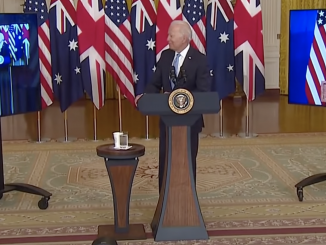 Soon after achieving independence from British rule, India decided to join the non-aligned movement to cultivate cordial ties with both blocks, the USA, and USSR. The then Prime Minister of India Jawaharlal Nehru emphasised the need for economic betterment of India by utilising the elements of national power, as opposed to a focus on military modernisation. But the unfortunate wars of the 1960s, first with China and second with Pakistan, exposed internal deficiencies of the Indian defence system. These factors and the changing strategic atmosphere of the region, compelled India to bring some necessary transformations in military-strategic settings.
Soon after achieving independence from British rule, India decided to join the non-aligned movement to cultivate cordial ties with both blocks, the USA, and USSR. The then Prime Minister of India Jawaharlal Nehru emphasised the need for economic betterment of India by utilising the elements of national power, as opposed to a focus on military modernisation. But the unfortunate wars of the 1960s, first with China and second with Pakistan, exposed internal deficiencies of the Indian defence system. These factors and the changing strategic atmosphere of the region, compelled India to bring some necessary transformations in military-strategic settings.
During the Indira Gandhi era, the Nehruvian legacy of solving bilateral issues with political and diplomatic wisdom diminished to a large extent. The Indian invasion of East Pakistan raised the morals of Indian policymakers. Indira Gandhi, the then PM adopted more offensive policies to make India a regional hegemon, as evident from her orders to the then chief of army staff, General Sam Manekshaw. To that end, India concluded a strategic defence deal with the USSR in 1971, often termed a friendship treaty, according to which an attack on India would be considered an attack on the USSR. India developed an industrial complex to make itself self-reliant in the field of defence. These offensive policies of Indira Gandhi demanded more modernised military and strategies, capable of not only defending India on two fronts (northern with China and western with Pakistan) but also enabling India to create more influence in the South Asian region.
The emergence of Pakistan in South Asia was not acceptable to India at any cost. During her second tenure, Indira Gandhi tasked the then Army Chief K. Sunderji to formulate a twenty-year plan for the Indian military. The main theme of this Sunderji doctrine was to build the Indian defence line on more sophisticated conventional capabilities, enabling India to carry out military actions deeper in Pakistan’s territories and to cut Pakistan into two pieces. These offensive calculations needed more modernised conventional capabilities. Due to these hawkish ambitions, the Indian military saw a huge doctrinal transformation in the 1980s.
During the late 1990s, the advent of nuclear weapons in South Asia changed the nature of the war between both adversaries. Nuclear weapons eliminated the chances of a total or full-scale war between India and Pakistan. But the continuous militant inflow from Kashmiri territories and terrorist attacks such as the 2001 Parliament attack, pushed India to adopt a transformation in war tactics, apparently to teach Pakistan a lesson. These developments led to introducing the concept of a limited war under the nuclear overhang, under which India prepared and launched the Cold Start doctrine with explicitly limited ambitions; these included mobilising troops in a short time and capturing a portion of Pakistan’s territory, to later be used as a bargaining chip.
The other important contributing factor behind the doctrinal transformation was the minimisation of operational gaps among the tri-services –Army, Navy, and Air Force. The Cold Start doctrine included the formation of Integrated Battle Groups (IBGs) in which land troops were to be supported by fighter jets to carry out swift and blitzkrieg type of actions while retaining the element of surprise for Pakistan.
The advent of nuclear weapons changed the nature of war in South Asia, but Indian military policy makers believe that gaps do exist between conventional and nuclear war. According to Gen. Khalid Kidwai (former DG Strategic Plans Division), India always wanted to utilise the options of manipulating Pakistan’s operational gaps while remaining under the nuclear threshold in Pakistan. These options motivated the Indian strategists to transform their conventional capabilities and shift to a limited war concept.
On other hand, Pakistan was not twiddling its thumbs. The timely measures of Pakistan puzzled the Indian military leadership. In response to the Indian Cold Start doctrine, Pakistan introduced tactical nuclear weapons, such as Hatf and Nasr which are capable of carrying warheads up to 70 km are capable of destroying the Indian planned division-size forces of approximately 20,000-25,000 personnel per IBG. In the aftermath of the Mumbai attacks in 2008, India blamed Pakistan for nurturing terrorists and threatened to take punitive measures, but due to internal operational gaps, India failed to operationalise the Cold Start doctrine; therefore in the 2010s, India once again transformed its doctrines and shifted to a sub-conventional mode of carrying punitive strikes inside Pakistan.
In the 1980s, India illustrated its military might in the Brass-tack war games, and speculations were circulating that India would sooner or later attack Pakistan with mechanised infantry and three strike corps, deep inside Pakistan’s territory to cut it into two parts; but successful cricket diplomacy and the possibility of acquiring nuclear weapons kept the Indians away from any military adventure. The timely retaliatory measures of Pakistan pushed India to explore new avenues and tactics to destabilise its enemy.
In 1962, India added another enemy to its list – China. The opening up of two war fronts on the northern and western borders gave Indian leaders sleepless nights. The contemporary military clashes between India and China in the Doklam and Ladakh regions served as a contributing factor in this process of transformation. The prominent Indian military strategist V.K. Singh argued that India is working to make military theatres, independent of each other. Therefore, the new land warfare doctrine of 2018 provides strategies for multi fronts.
The tectonic shift in global politics placed the south Asian region on top of the list of hotly debated regions. The nuclear environment added more to the plight of the already perplexing strategic milieu. The start of the 21st century is marked by swiftly changing dynamics of global politics; therefore, to cope with looming challenges, states are adopting timely measures to secure their respective national interests. These shifts in regional strategic settings are evident in the South Asian region. After the creation of India and Pakistan, both were main strategic rivals in this region. But later, the descending graph of Pakistan left it behind in this game. In the contemporary situation, India and China are the leading horses in the South Asian race. The plight has now touched a climax when major powers, like the USA, Israel, Russia, and the European Union, decided to make hay while the sun shines by deepening their strategic alliances with India to counter the ballooning Chinese rise and expanding friendly relations with Pakistan.




Be the first to comment